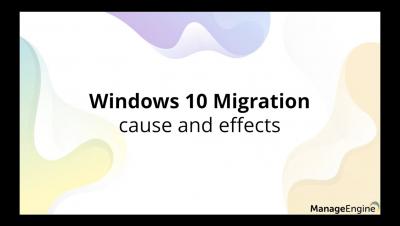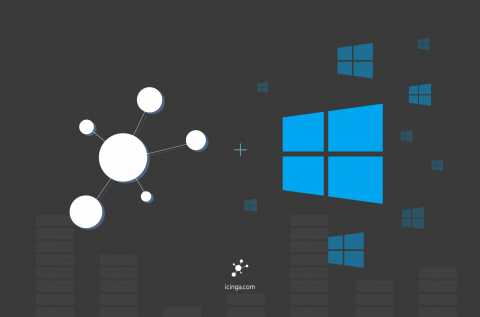Operations | Monitoring | ITSM | DevOps | Cloud
Windows
Now Available: Calico for Windows on Red Hat OpenShift Container Platform
Approximately one year ago, Kubernetes 1.14 made support of Windows containers running on Microsoft Windows Server nodes generally available. This was a declaration that Windows node support was stable, well-tested, and ready for adoption, meaning the vast ecosystem of Windows-based applications could be deployed on the platform.
IT security: Keep calm and monitor PowerShell
In our last release of the PowerShell security series, we talked about how PowerShell could be leveraged by malicious actors to gain unprecedented access to your organization’s critical assets. From enumerating sensitive domain information and carrying out credential-based attacks to running malicious executables in memory (file-less malware), we shined a light on the potential of PowerShell and why it’s an ideal weapon for cyber attackers today.
Windows 10 Migration - Cause and Effects
Announcing Icinga for Windows v1.0
It is finally ready for launch – the first final release v1.0 of Icinga for Windows. The past months were quite challenging: Analyzing, troubleshooting and fixing issues reported by our awesome community and customers: Your support made it possible that we can celebrate the release of our new foundation for Windows monitoring. Scalable. Simplified. Extendable.
Migrate Your Windows 2003 Applications to Kubernetes
There’s no one-size-fits-all migration path for moving legacy applications to the cloud. These applications typically reside on either physical servers, virtual machines or on premises. While the goal is generally to rearchitect or redesign an application to leverage cloud-native services, it’s not always the answer.
SolarWinds Server Configuration Monitor Overview
Windows 7 to Windows 10 - Migration Made Easy!
Windows 10 and RDSH - Has the Game Changed?
I wrote a blog article back in 2017—Windows 10 and Windows Server 2016 – the Old Battle of VDI Versus RDSH—wherein I discussed in depth the relationship between Windows 10 as a client OS and Windows Server with the Remote Desktop Session Host role installed. Since virtual desktops became a thing, this debate has continued pretty much in the form that I laid out there.
NSA's Windows 10 Advisory - Is Your OS Really Secure?
New year, same old problems for Windows 10. But it doesn’t have to be that way. Earlier this month the United State’s National Security Agency (NSA) announced that they discovered a major vulnerability in Windows 10 and Windows Server 2016 that could have had dire consequences for businesses around the world. The vulnerability places Windows endpoints at risk to a broad range of exploitation vectors NSA official cybersecurity advisory











